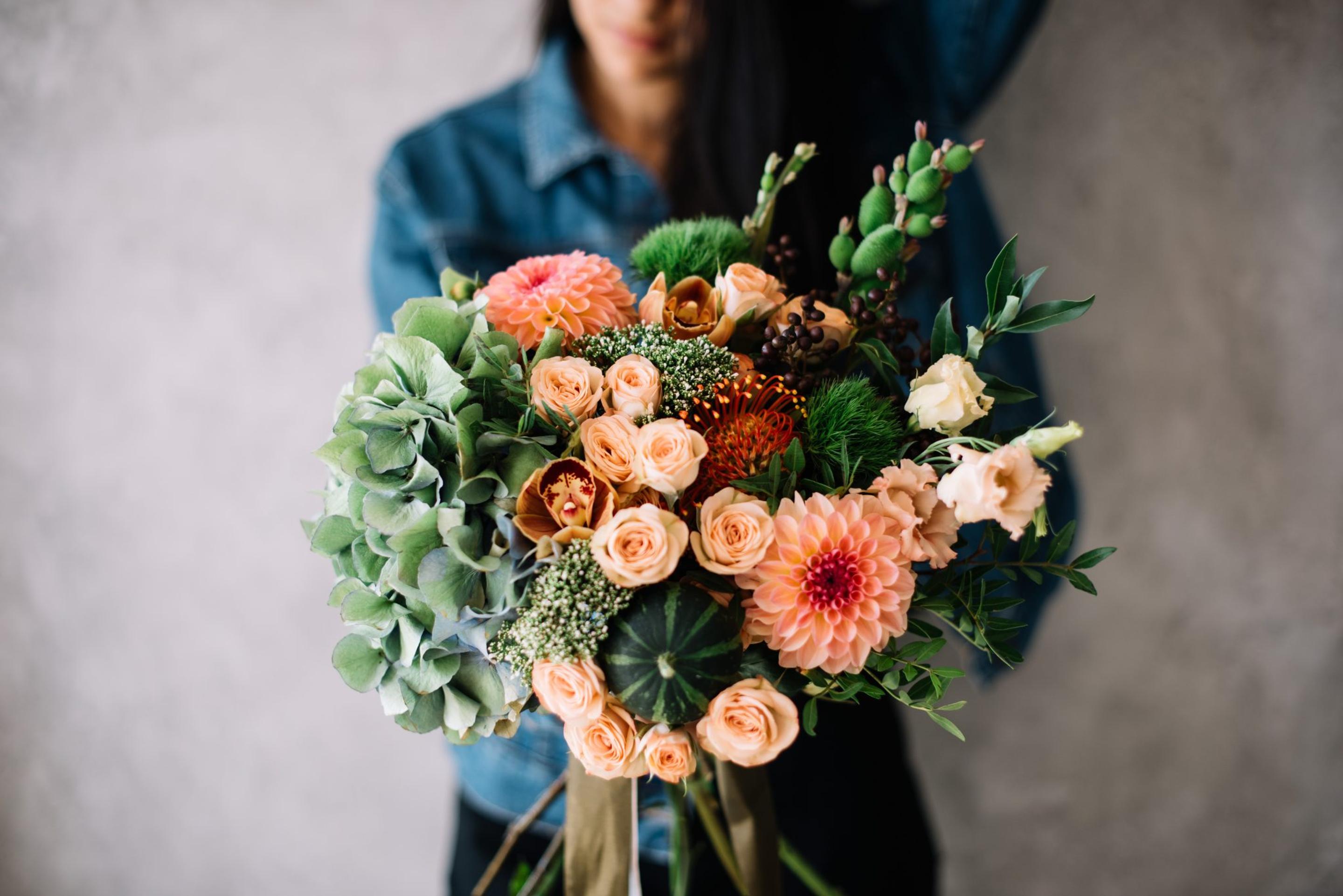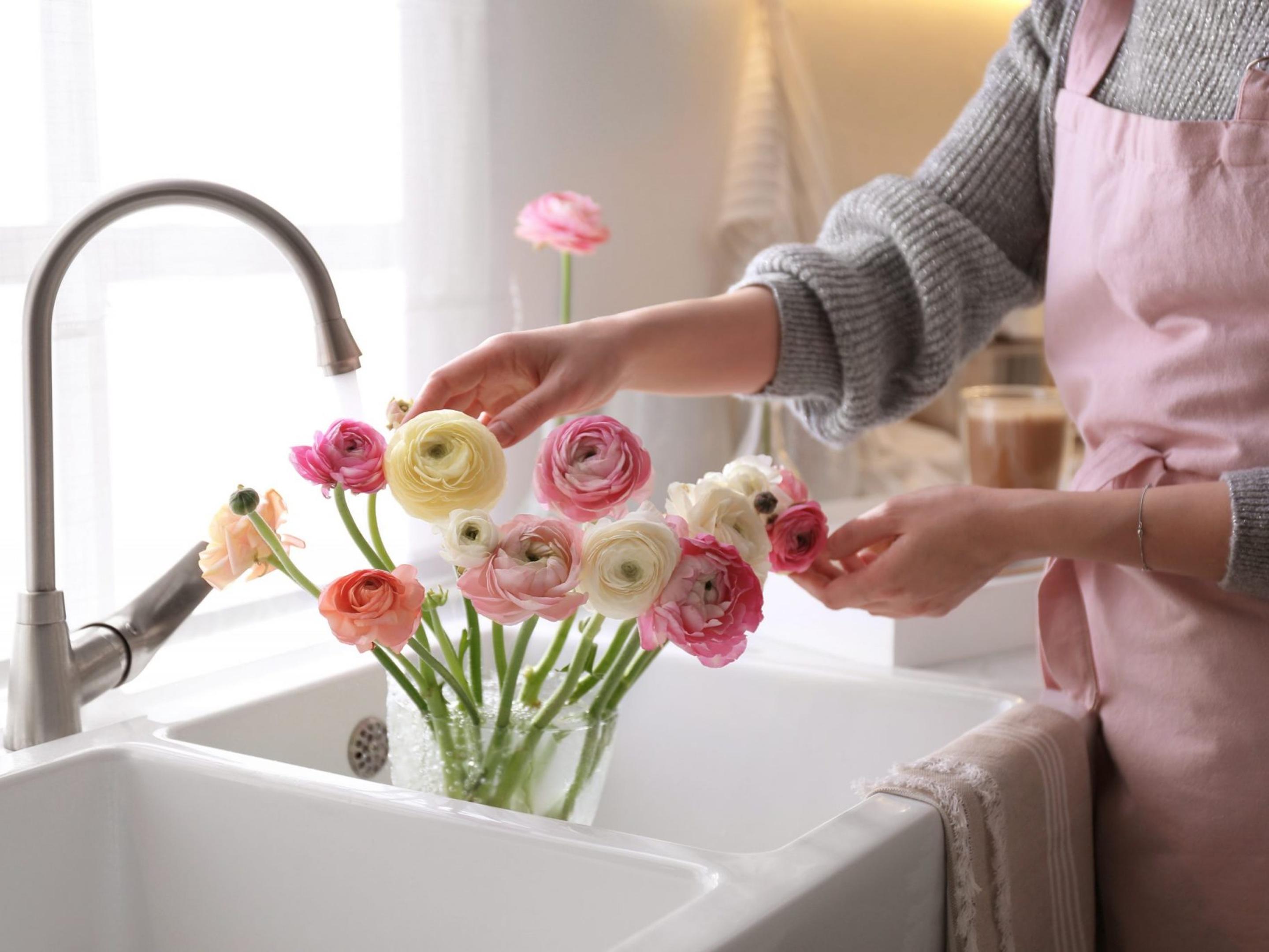
Cut flowers fill our homes and lives with vibrancy and color, yet the joy they bring often fades too quickly. Luckily, some cut flowers last longer than others!
Let’s check out the different types of cut flowers and which ones will give you the most bang for your buck.
Whether you’re a seasoned pro or just looking to make your bouquet last a little longer, keep reading to find out which flowers you should be choosing.
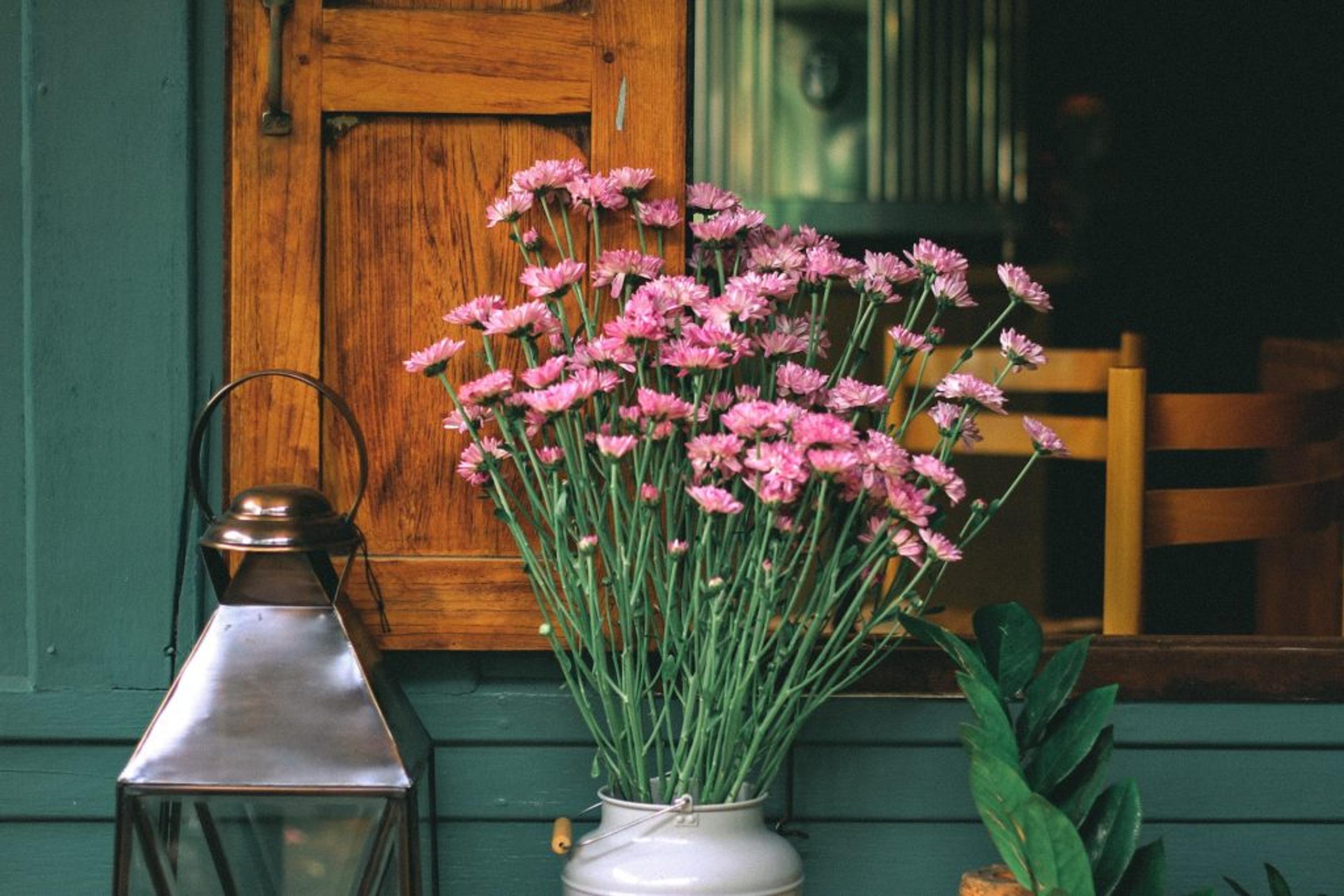
Which cut flowers last the longest?
1. Carnations

Carnations are a super-flower. It’s no secret. Not only are they visually stunning, but their light, pretty scent is nothing short of heavenly. They can also last up to three weeks in a vase (yes, three!), so long as you take the proper precautions.
How to make your carnations last as long as possible:
- Place your freshly cut flowers in water as quickly as possible.
- FiIl your vase with water and let the water come to room temperature.
- Cut the bottom of the stems at a 45 degree angle just above one of the nodes on the stem.
- Remove the leaves that will fall below the water-line as they will rot.
- When the water starts to look cloudy, replace it with fresh water and rinse off the submerged part of the stems to keep them clean and fresh.
- Keep your carnations in a place that doesn’t receive direct sunlight and away from cool drafts or intense heat.
2. Ranunculus

Ranunculus are without a doubt a fan-favorite. They come in so many colors and have a full, lux look that we just can’t help but adore. With the proper care, ranunculus can last up to two weeks.
- Once you get your ranunculus home, remove the wrapping immediately (if they’ve come wrapped, of course!) to let your blooms breath.
- Using a pair of sharp garden shears, scissors, or a kitchen knife (with caution!), trim the bottom half inch of the base of the stems at a 45 degree angle.
- Remove any leaves or foliage that will fall below the water line once placed into a vase.
- Fill a vase with lukewarm water about three quarters of the way and place your blooms inside. Why lukewarm water, you may ask? Warm water molecules move faster than cold water molecules, making them more easily absorbed. The goal here is to get water and nutrients to the head of the flower as quickly as possible.
- Change out the vase-water every two to three days.
- Add a flower food of your choice to the water.
3. Lilies
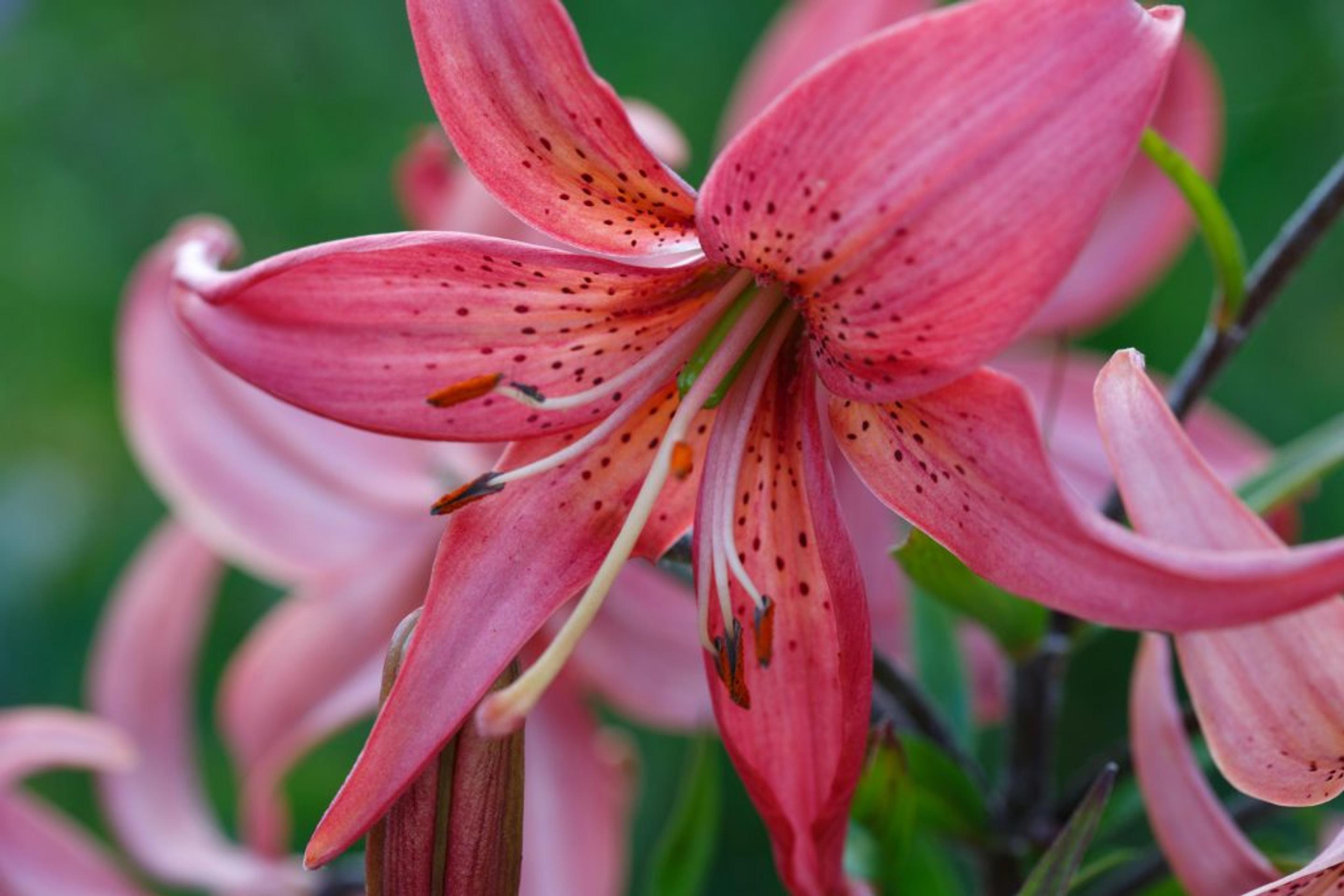
Big, bold, and beautiful—lilies are a great way to make a huge impression. With their large size, variety of beautiful hues, and, of course, their signature smell, lilies make the perfect addition to any floral arrangement or bouquet. Plus, with the right care, lilies can last over two weeks.
How to keep your lilies thriving:
- Fill your sink or a bucket with lukewarm water.
- Remove the lilies from their vase or wrapping and place the stems in the water.
- Keeping the stems underwater, trim the base of the stems at a 45 degree angle with sharp clean shears or knife. Why a 45 degree angle? This diagonal cut provides more surface area at the base of the stem allowing more water to flow from the base to the head of the bloom, while cutting underwater prevent air bubbles from blocking the water that’s being pulled up the stem.
- Remove any leaves or foliage that will fall below the water-line, leaving at least four sets of leaves above the water-line to provide nutrition to the lily buds that still need to open.
- Fill a vase with clean water.
- Add a packet of flower food.
- Place the flowers in the vase and keep them in a cool area away from direct sunlight and drafty breezes.
- Clip the pollen covered anthers from the flowers with scissors as the lilies open to prevent staining.
- Remove leaves and flowers as they begin to die.
- Replace vase-water with fresh water every two days.
4. Calla Lilies
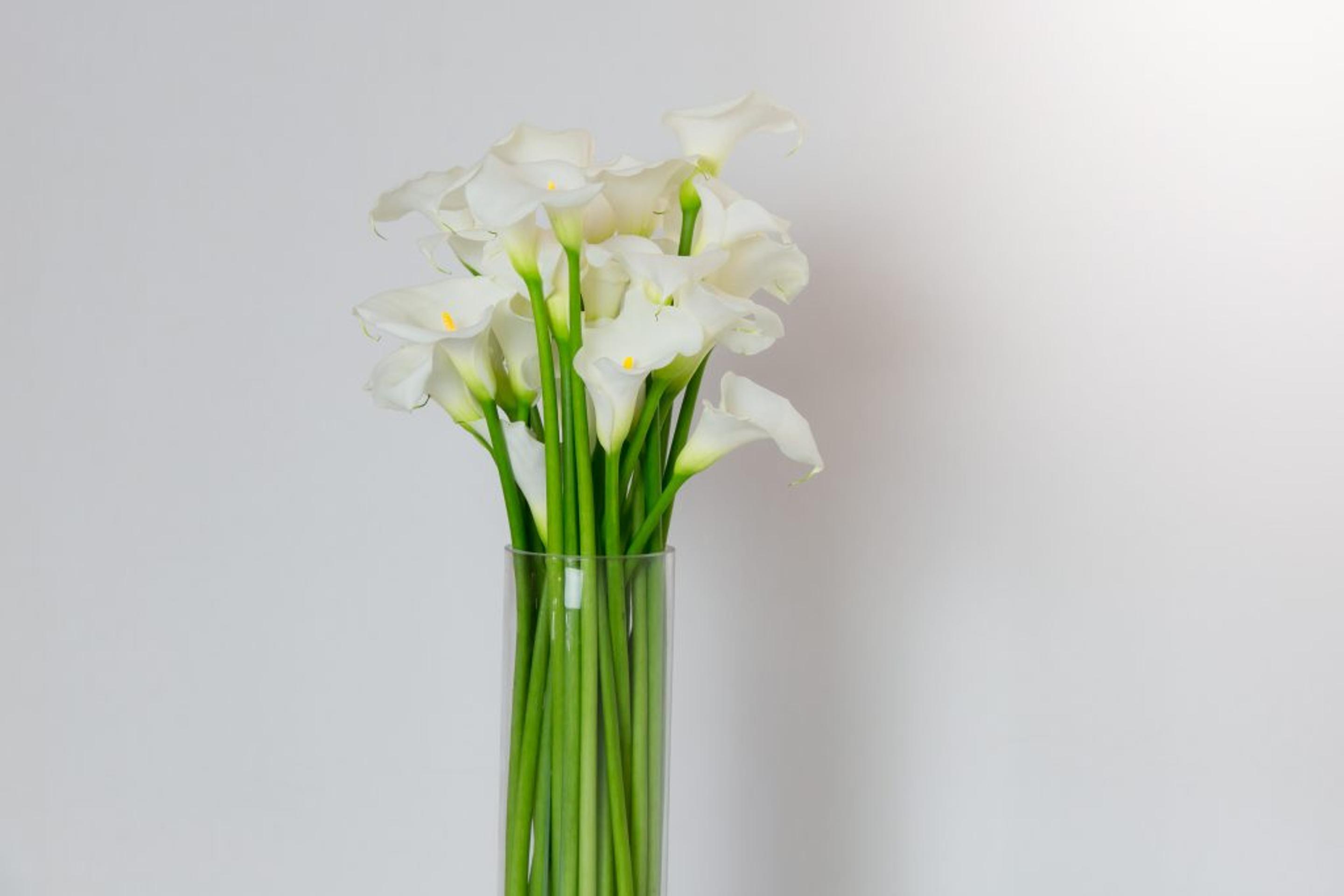
A symbol of rebirth and resurrection and an Easter favorite, calla lilies add long-lasting color, elegance, and class to any floral design. While calla lilies are quite delicate, with the proper care, these beauties can last for weeks!
How to make your calla lilies last as long as possible:
- Unlike traditional lilies, calla lilies won’t continue to bloom after they’re cut. When choosing your blooms, look for callas that are smooth, firm, and wrinkle-free.
- Check the stamen for pollen. If pollen is present, the flower has begun to age and won’t last as long. If there’s no pollen, the flower is still fresh.
- Be sure your calla lilies are well hydrated by wrapping each stem in an elastic band and standing them upright in water for at least two hours. After the first hour, remove the elastic.
- After they’ve had a chance to hydrate, keeping the stem underwater, use sharp shears to cut the calla lilies at a 45 degree angle. If you can, leave some of the white part of the stem to help prevent splitting as the blooms age.
- Place your cut callas in a vase filled with two inches of water and flower food.
- Add fresh water every day to keep your calla lilies hydrated and reduce bacteria growth. If you notice stem-splitting or if your stems become slick, recut the stems. A good rule of thumb is to cut the stems underwater every two days to keep unwanted bacteria away.
- Keep your calla lilies out of direct sunlight and away from drafts from air or heat vents.
5. Gladiolus
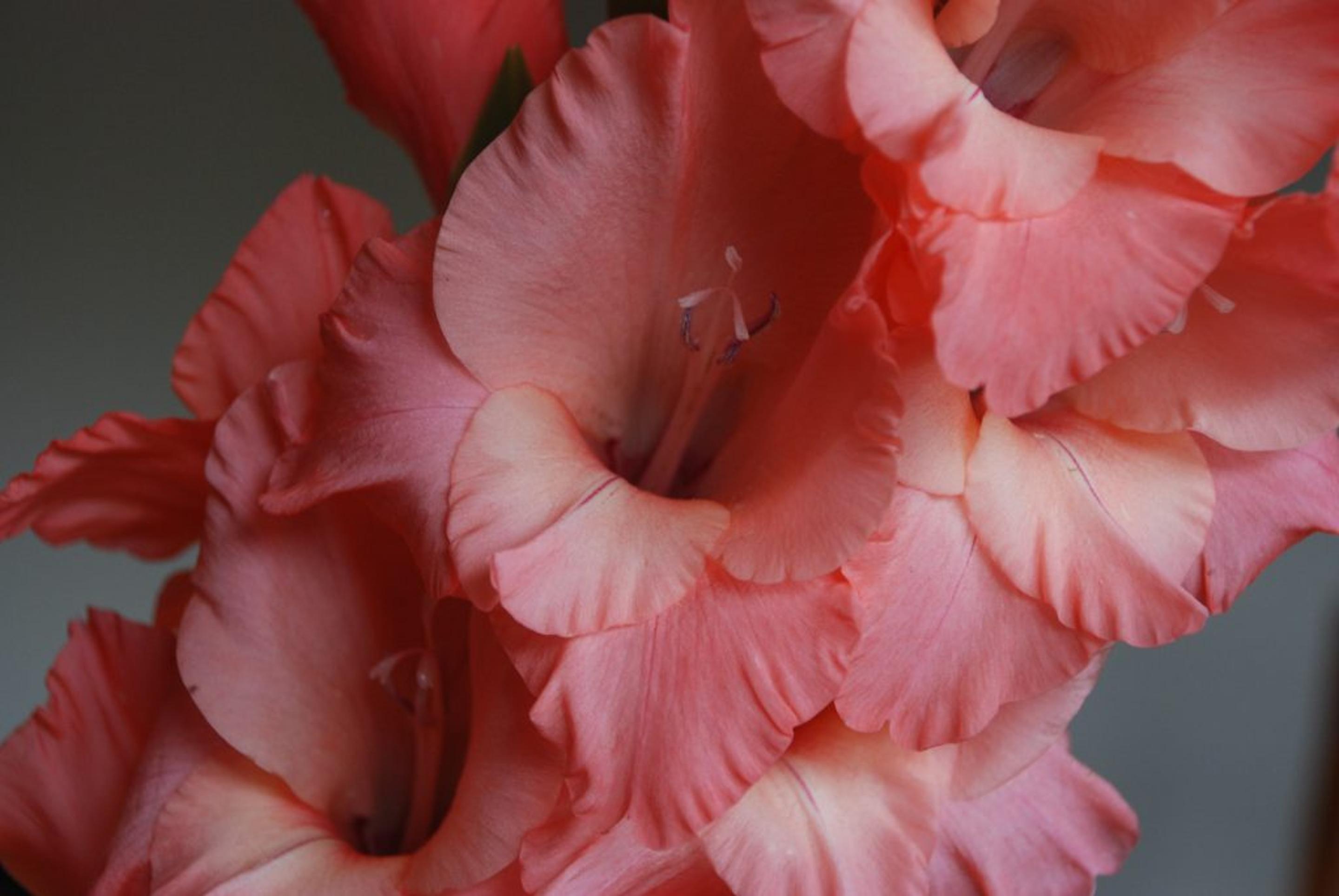
The gladiolus, otherwise known as a beautiful, proud, tall drink of water, is easily identified by its strikingly tall stalks and large, abundant blooms that grow in all sorts of vibrant colors. As August’s prized flower, these blooms have a lot more to offer than their beauty. With the proper care, gladiolus can last up to two weeks.
How to make you gladiolus last:
- With a fresh knife, trim the base of the stems at a 45 degree angle.
- Be sure to keep fresh water in the vase by replacing it every two to three days.
- Remove the blooms lower on the stems as they begin to droop to help encourage the upper flowers to open.
- Keep the gladiolus away from warm or cool drafts.
- Recut the stems every day or so and place them back in clean fresh water.
- When it comes to water, less is always more with gladiolus. While these beauties love water, they don’t need more than six inches in the vase.
6. Chrysanthemum

A popular bloom amongst bouquets and boutonnieres, chrysanthemums are also a popular bedding plant used in landscaping projects around homes and businesses because of their hearty nature. With proper care, these beauties can last anywhere from 15-20 days.
How to make your chrysanthemums last:
- With a sharp knife, cut the base of the stem at an angle.
- Choose a vase with a neck that is not too narrow or too wide.
- Remove any foliage that will fall below the water-line so they don’t cause rot or interfere with the blooms ability to absorb water.
- Fill a vase about halfway with room temperature water and place your blooms inside.
- Be sure to keep your fresh chrysanthemums away from direct sunlight and radiators.
- Replace the vase-water every one to two days, trimming the stems by approximately a half to one centimeter each time.
7. Freesia
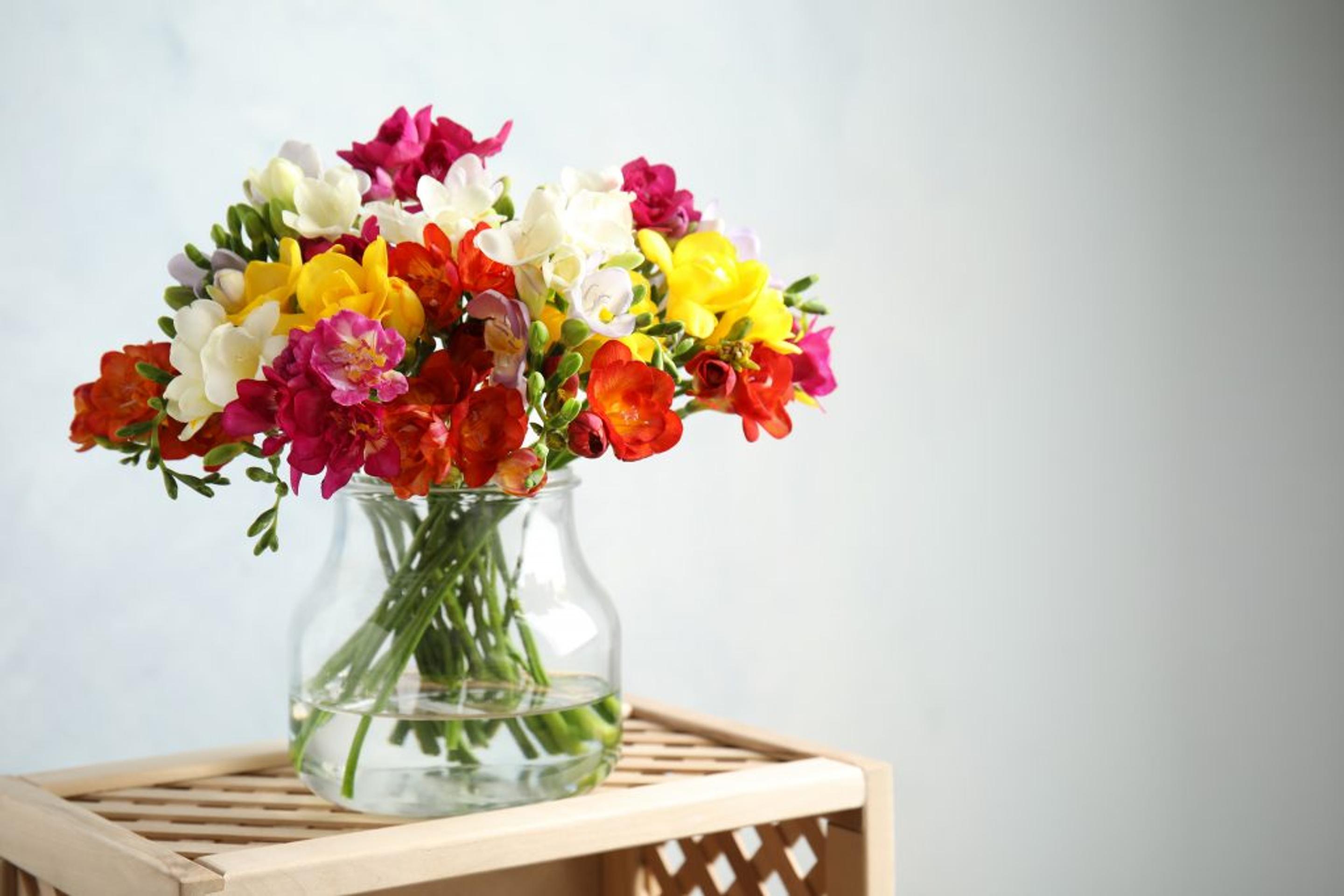
The sweet smell of spring! These blooms may be dainty, but don’t let that fool you. With the proper care, cut freesia can last up to three weeks.
How to make your freesia last as long as possible:
- Choose flowers who’s buds are beginning to open and show some color. When freesias are cut too soon, not all of their blooms will open.
- Freesia are susceptible to dehydration, so be sure to place them in a clean vase of fresh water.
- Trim approximately two to five centimeters off the base of the stem with a clean, sharp knife.
- Keep your fresh freesia away from any drafty breezes and ripening fruit (hello fruit flies!).
8. Alstroemeria

The term Inka means “ruler” or “lord” in Quechua, the main language of the Inca Empire. And like the Incas, alstroemeria rules over gardens and bouquets alike with its incredible colors and tiger-pattern throats. With proper care these hardy blooms can last up to three weeks.
- Place your cut alstroemeria in fresh, room temperature water.
- Prep a clean, rinsed vase that’s large enough to comfortably hold all the blooms without overcrowding.
- Add a few inches of warm water to the vase with flower preserves.
- Trim the base of each stem underwater, at an angle, one at a time to avoid air bubbles.
- Remove all excess leaves from the bottom half of each stem.
- Keep your fresh blooms away from any drafts, wind, and direct sunlight.
- Change the vase-water regularly and add flower preserves to slow the growth of bacteria.
- If you notice any wilting blooms or foliage, remove them before they die completely, as dead plant material encourages bacteria growth.
9. Dahlia

Dahlias are totally unique and produce one of the most spectacular blooms in the flower kingdom. They come in a huge variety of sizes and colors but can always be identified by their distinctive spikey petals and vivid color.
Tips for keeping dahlias fresh:
- Dahlias love water! If your dahlias come wrapped instead of in a vase, place them in fresh water as soon as possible to maximize their vase-life.
- Placing dahlias in hot water and letting it cool to room temperature can extend their vase-life up to two to three days.
- Smaller, more compact varieties of dahlias last longer than bigger, more boisterous ones.
- Keep your dahlia’s weight supported by other flowers, and use flower food to keep the water clean and clear.
- Keep these blooms away from direct sunlight to avoid wilting.
- Ensure their water is always clean and trim the base of the stem every one to two days.
10. Gerbera Daisy

They’re sleek, elegant, big, bright, and fabulous! Gerbera daisies make for a bright, colorful display and can last up to two weeks or even longer with the proper care.
- Combine flower food with about one quart water at approximately 90 degrees Fahrenheit in a clean vase.
- Holding the stem underwater, trim the end of the stem at a 45 degree angle with a clean knife or scissors.
- Keep your Gerberas in shallow water to avoid weak stems (about one inch of water will do).
- Keep your fresh cut flowers in a cool room overnight to help keeps the blooms firm.
- During the day, place your Gerberas in an area with bright but indirect sunlight, but avoid areas with high heat or freezing temperatures like near a drafty window or near air conditioning/heating vents.
- Replace the vase-water every one to two days.
- If the ends of the stems begin to feel spongy or the flowers begin to wilt, recut the stems to improve the flower’s water-uptake.
11. Delphinium
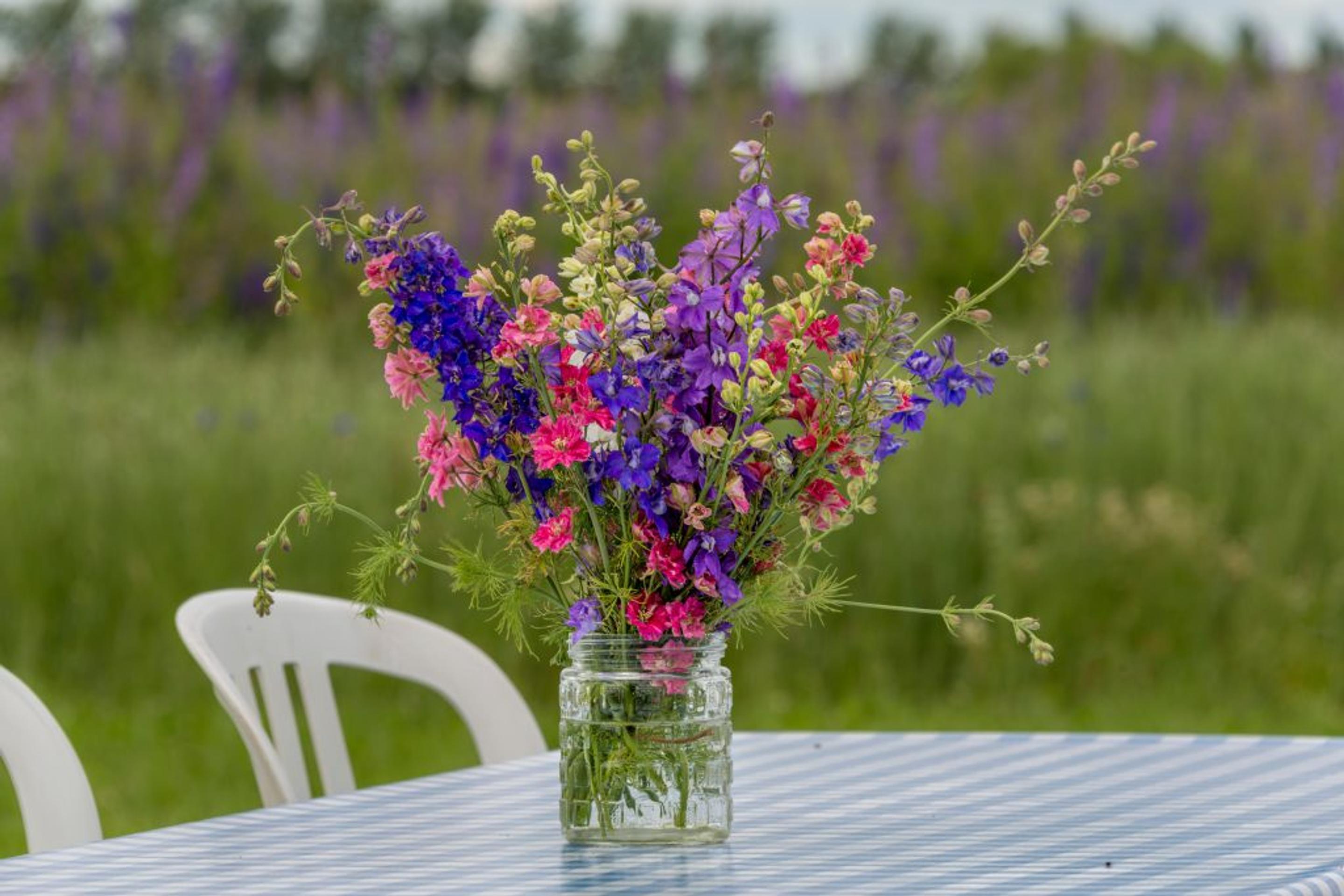
Delphiniums are perennials with sensational plumes of color. They’re summer blooms, and you’ve probably seen them in blue, pink, white, and purple. With the proper care, these cut beauties can last one to two weeks.
- Rinse and recut the stems underwater.
- Remove any foliage that will fall below the water level.
- Use a hydration treatment to help increase blooming and decrease wilting.
- Change out the vase-water with fresh water every two to three days or if you notice it looking a bit murky.
- Recut the stems each time you change the water.


